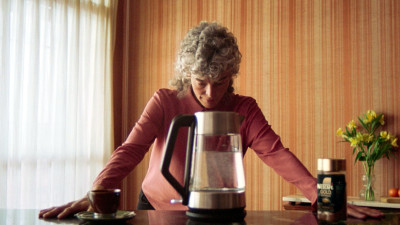We believe that increasing the accessibility of information and transparency of ingredients is critical to transforming the cleaning products industry. Tapping into consumer demands for sustainable and trustworthy cleaning supplies will also drive the clarity needed by manufacturers to better understand what is in their products.
We Must Be Able to Read the Label:
The Imperative of Ingredient Transparency
As consumers increasingly look for more sustainable ways to shop, all elements of the cleaning product supply chain are under pressure to assess, and communicate, their ingredients and processes. Rather than feel daunted by the need for transparency, this is an opportunity for cleaning product brands to generate trust and connect with their customers on a deeper level. It is also a chance for both consumers and manufacturers to play their part in accelerating the sustainable transformation of the sector.
Placing power in the hands of the consumer
We have entered an era where consumers are asking more questions and requiring more information about the products they bring into their homes; and this is perhaps no more apparent than in their approach to cleaning products — an essential part of keeping our homes safe and hygienic — and consumers want to feel confident in their effectiveness. Yet, despite cleaning product manufacturers providing more information than ever before, there is still more to be done — especially with so many consumers looking online for details about what’s in these products.
Shoppers are also more likely to choose products with ingredients that are aligned to their personal values. It’s no longer just about considering whether products perform at a functional level; now, more than ever, there is consideration given to whether products are performing in line with sustainability expectations. A recent Capterra survey revealed how important choosing healthy, sustainable products has become for consumers. The survey showed that 84 percent of them would be willing to pay more for sustainable products, despite current inflation levels.
With sustainability now at the forefront of many purchasing decisions, ingredient transparency will place the power directly into the hands of consumers — allowing them to choose to clean and disinfect their homes and workplaces with products they trust, and that don’t compromise their commitment to the planet.
More than a decade ago, the American Cleaning Institute (ACI) — which just released its 2022 Sustainability Report — led the way in promoting voluntary cleaning product ingredient communication efforts industry-wide. Policy discussions evolved over time, leading to the 2017 enactment of the California Cleaning Product Right to Know Act — a law mandating a complete listing of ingredients on product labels and websites.
The right to full ingredient transparency should now be extended to consumers across the country. Our ultimate vision is for a national ingredient disclosure standard that drives a consistent approach to information across the US, rather than state by state. Sharing ingredient information in a transparent and standardized way will make it easier for consumers to compare products and choose the best option to suit their needs.
The power of consumers and manufacturers will come together most effectively when ingredient transparency is not only universal but also comprehensible and user-friendly. Brands and manufacturers must make sure consumers are, first and foremost, able to understand what they are reading. Our mission at ACI is for cleaning product labels to be universally accessible. It’s why we provide tools on how to read labels correctly, use products safely and check ingredients through our Cleaning Product Ingredient Safety Initiative (CPISI) and Cleaning Product Ingredient Environmental Safety (CPIES) program. Most recently, ACI released “What Cleaning Products Do” — which addresses the gap between required ingredient disclosures and a consumer’s right to understand and be able to make informed decisions. By using this tool, formulators, developers and marketers can shape a better standard of consumer understanding of the role ingredients play in helping to make cleaning products safe, beneficial and effective.
Remembering the ingredients themselves
While we focus on transparency, we must not forget to look at the ingredients themselves and their potential impact on the planet.
Our members are motivated to create products that are safer both for human health and the environment, which is why we are constantly striving for greater sector regulation. So far, our contributions over the last decade have included adding eight chemicals to the EPA’s Safer Chemical Ingredients List. We also developed the CPIES program as part of our push toward greater information accessibility. This initiative helps consumers and companies assess the environmental safety of certain ingredients. Furthermore, in an attempt to increase consumer awareness and help them find products with safer ingredients, we partnered with Good Housekeeping magazine to host a first-of-its-kind cleaning summit, which included a panel on ingredient transparency.
Beyond this, we are looking at the environmental impact of our products by assessing the concentration of chemicals that go down the drain. Our publicly available online tool, iSTREEM®, is designed to help companies, academics and governments — as well as curious consumers — learn about the environmental impact of certain chemicals and how their residual levels impact aquatic environments. By making this information widely available, we hope to encourage more sustainable purchasing decisions and have a positive impact on the wider sector.
We believe that increasing the accessibility of information and transparency of ingredients is critical to sector transformation. Tapping into consumer demands for sustainable and trustworthy cleaning supplies will also drive the clarity needed by manufacturers to better understand what is in their products. In the coming years, we hope to see greater transparency resulting in more sustainable cleaning solutions and a cleaner future for all.








